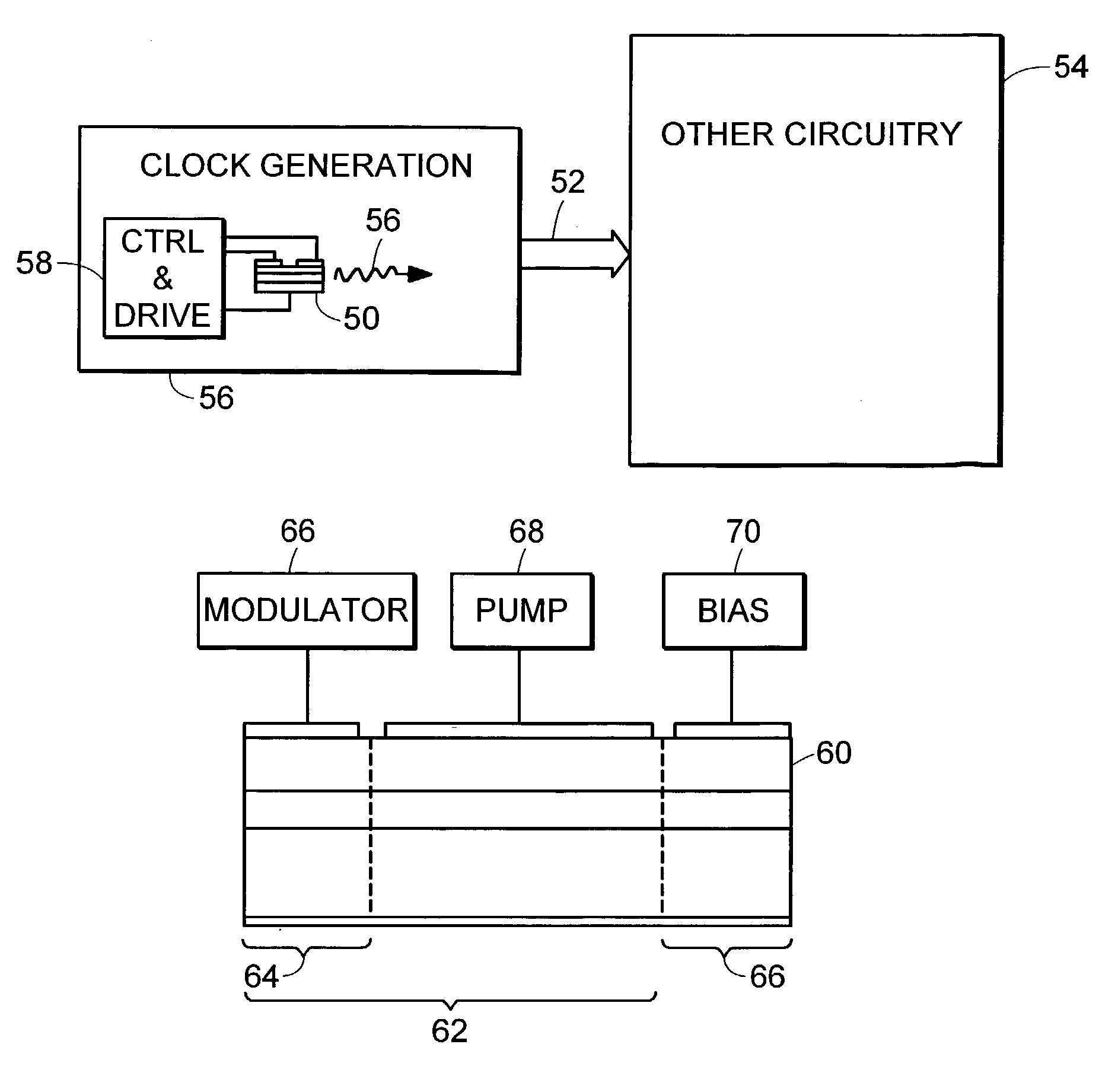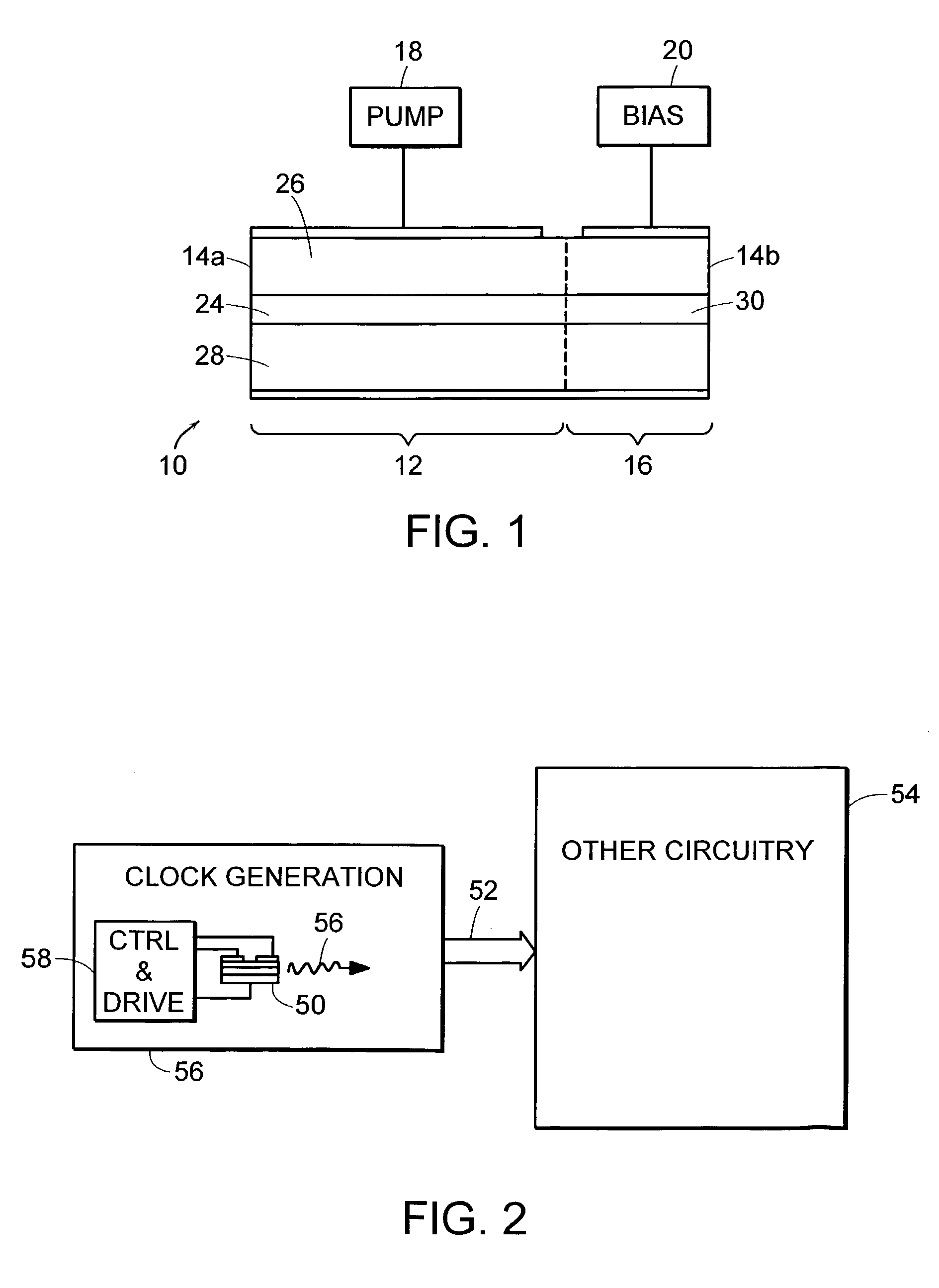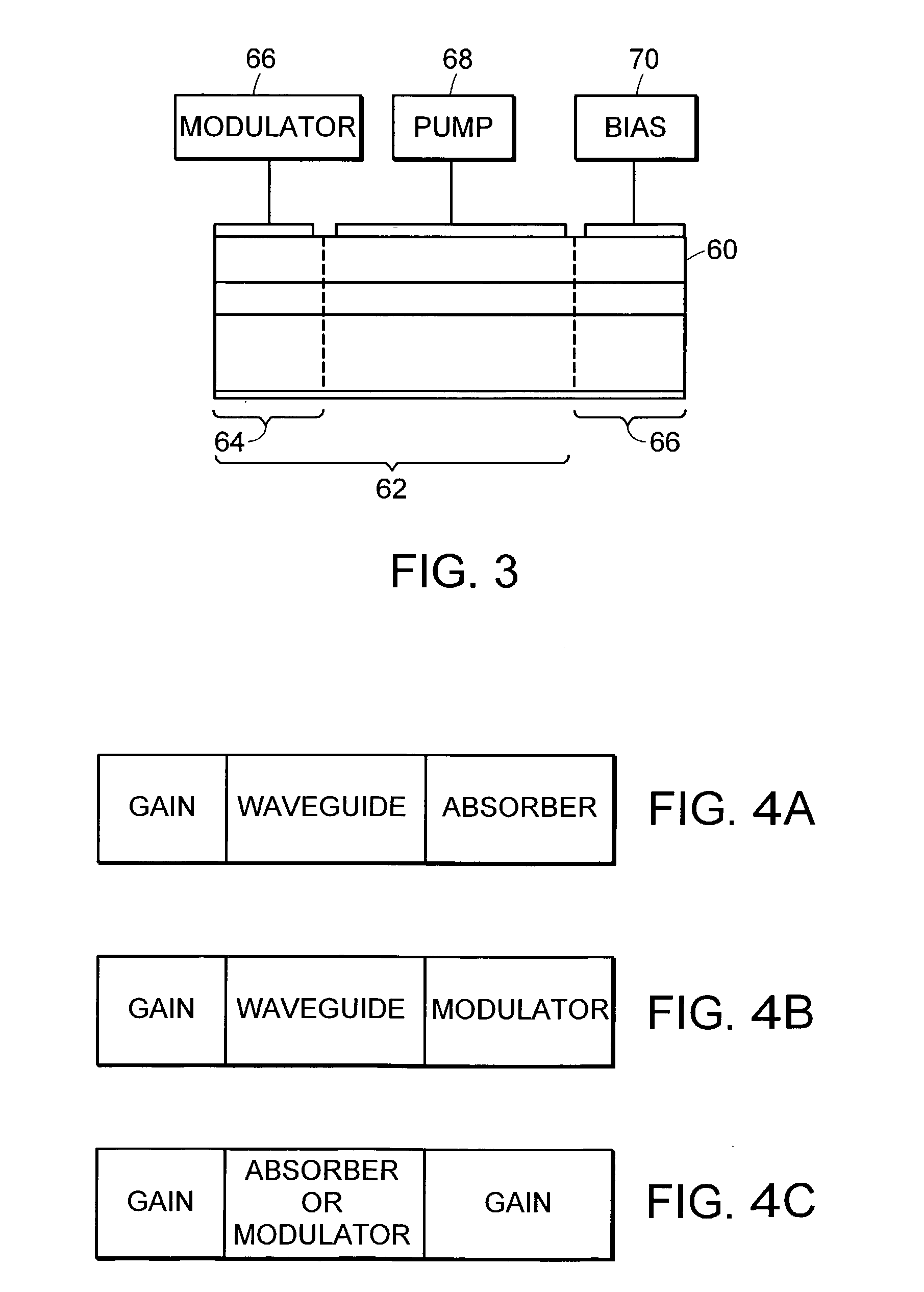Pulsed quantum dot laser system with low jitter
a quantum dot laser and laser system technology, applied in the field of quantum dot lasers, can solve the problems of low jitter, and achieve the effects of low phase noise, low jitter, and low jitter
- Summary
- Abstract
- Description
- Claims
- Application Information
AI Technical Summary
Benefits of technology
Problems solved by technology
Method used
Image
Examples
Embodiment Construction
[0024]Referring to FIG. 1, one exemplary embodiment is a laser diode 10 which incorporates into its structure at least one region having a broad random statistical distribution of quantum dots of different sizes, shapes, compositions, and / or environments. As will be discussed in greater detail below, this broad distribution of quantum dots produces in the laser diode structure a correspondingly broad distribution of emission wavelengths which, in turn, greatly facilitates matching to cavity modes within the laser diode.
[0025]Laser diode 10 includes an optically amplifying medium forming a gain element or gain section 12 within a cavity formed by two partially reflecting surfaces or mirrors 14a and 14b located on opposite sides of the device. Mirrors 14a and 14b can be formed by cleaving the ends of the device to form surfaces which contact the air and produce a reflectivity of about 30%. Mirrors 14a and 14b provide optical feedback according to which a portion of the amplified light...
PUM
 Login to View More
Login to View More Abstract
Description
Claims
Application Information
 Login to View More
Login to View More - R&D
- Intellectual Property
- Life Sciences
- Materials
- Tech Scout
- Unparalleled Data Quality
- Higher Quality Content
- 60% Fewer Hallucinations
Browse by: Latest US Patents, China's latest patents, Technical Efficacy Thesaurus, Application Domain, Technology Topic, Popular Technical Reports.
© 2025 PatSnap. All rights reserved.Legal|Privacy policy|Modern Slavery Act Transparency Statement|Sitemap|About US| Contact US: help@patsnap.com



